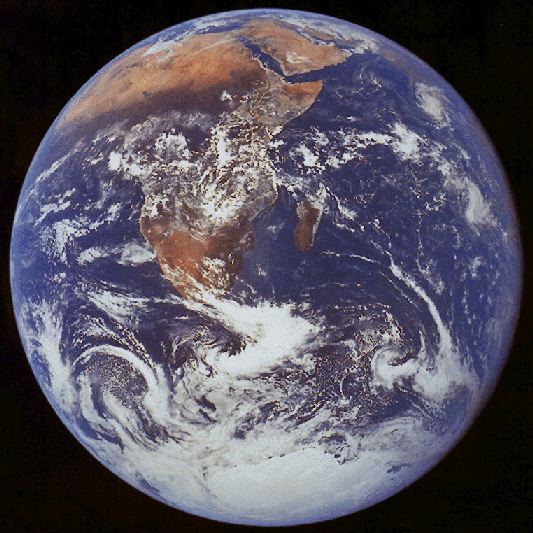
NASA Photo Credit Apollo 17 Dec. 7, 1972
Essential Question:
How are the Earth, atmosphere and cultures all connected?
Introduction:
At the beginning of the previous module, it was suggested that the ocean serves to demonstrate how everything on Earth is connected. This notion can be taken a step further; Because the atmosphere covers 100% of Earth's surface, it is arguably the best example of how on Earth everything is connected.
Like our fluid ocean, our fluid atmosphere flows around and over all surfaces and physical obstacles without regard for political boundary or culture. It can be thought of as our most common resource on Earth. Common in the sense that we all share it, and whatever happens to and within it is shared by all in common.
In a sense, we're like lobsters living at the bottom of an immense ocean of air, trying to understand the invisible medium in which we dwell, usually obliviously.
Scientific study, starting with balloons and ending with satellites, has revealed its complex structure, including some surprising extremes in radiation, temperature, density and composition.
But let's not be fooled by the apparent enormity of this great envelope of gases. Early pictures of our planet taken from space gave us our first dramatic glimpse into how thin and ephemeral this gauze of gases truly is.
Scientifically, we will explore the composition, structure and dynamics of the atmosphere, with an eye toward how it participates in the thermodynamics of Earth's heating and cooling processes. There's even a lab on the phun physics of phase.
Culturally, we will explore some of the more recent discoveries regarding the atmosphere's role in distributing and concentrating airborne anthropogenic pollutants, along with the disproportionate impacts borne by arctic people.

